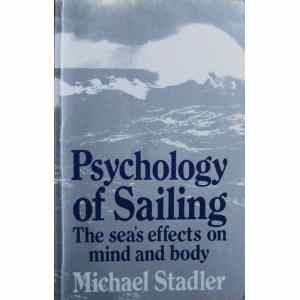 |
| Photo by: Erik K Veyland |
Mal de Mer
There we were last weekend, just setting out from Weymouth on the southern shores of England. We were repositioning an Arcona 37 so as to be well placed for the race start the following day.
The Can Opener discussed race details with the tactician. The skipper gazed stoically out to sea. I stood over the rest of the crew poking them judiciously from time to time with the motivational sceptre. All were shiny bright and waxing optimistic.
Then suddenly we gurgled forth from the protective arm of the headland curving around the east side of Weymouth Bay… and met a quartering four metre sea…
The rest of the crew had been over to Cherbourg and back in the last month (thus inuring themselves – or at least upping their resilience – to the unsettling motion of the waves). My dear Can Opener had not.
This put him outside the mythical ten week* ring fence since he last had faced rolling seas (on the Spain to Greece delivery). ‘Twas as if my First Mate had never been to sea at all.
First he began to yawn. That’s the first sign. Then he was careful to keep hydrated and even popped a few of my ginger biscuits I had ear-marked for later. But greener and greener did he glow.
Signs of sea sickness include**:
- drowsiness (yawning)
- lethargy
- cold sweat
- pale face
- nausea
Ways to combat sea sickness before you leave the dock**:
- get enough sleep before you leave
- don’t drink alcohol, carbonated drinks, coffee, or greasy or acid foods (citrus juices for example) for several hours before you leave
- eat breads or mild food to put something in your stomach
- drink water – stay hydrated
- take an anti-motion sickness medication eg Stugeron, Dramamine, etc (consult with your doctor)
- use accupressure wrist bands
- and long before you leave the dock – be in good physical condition overall
Ways to combat sea sickness on the water**:
- avoid gas and diesel fumes
- avoid confined spaces or going below
- eat soda crackers or ginger
- don’t sit near others who are being sick
- sit at the centre (amidships) of the boat
- look at the horizon
- steer the boat
- lying down amidships with eyes closed
I clipped his tether to the jacklines… and not a moment too soon. The Can Opener was sick as a dog.
I will not regale you with vivid descriptions of projectile ginger biscuits, nor the inelegant way he convulsed and spewed. Suffice it to say… (Alright, alright Furrball! Enough. I puked, okay? Stop yer giggling… ). Ahem. Er… yes, well.
… I firefighter-lifted him tenderly down the ladder to the saloon and dumped him behind the port bunk lee cloth where he neither moved nor whimpered for nearly three hours. After which point, he woke up and was perky as a Pomeranian.
There is not much misery worse than sea sickness. Even Captain Cat succumbs from time to time. But after it passes, it’s like a whole new dawn.
I took it easy on the Can Opener thereafter and for the rest of the trip. Seated in his lap, I regaled him with pithy wisdom (mine) from my book of memorable quotes. From time to time, I enhanced my delivery with operatic embellishment, further illuminating its hidden meaning. The Can Opener was most appreciative – opining that yes, the meaning was, indeed, well hidden.
It’s just in rough draft now, but one day I will publish my genius for the benefit of humanity. The Can Opener says he looks forward to it.
–Captain Cat
(transcribed by the Can Opener)
* Some say that if you build up ‘immunity’ to sea sickness by surviving it once (usually takes about three days to get though it at the beginning of a passage), then your body will remember how to cope next time. As long as ‘next time’ happens before another ten weeks have passed, you should be okay. It you don’t do a passage for ten weeks or more, then you have to start all over again. Of course these are just rough guidelines. They seem to fit the Can Opener’s experience, however.
** This info is nicely summed up with more detailed explanations at http://www.goddesscruise.com/SeaSick.htm






